LG Optimus 2X & NVIDIA Tegra 2 Review: The First Dual-Core Smartphone
by Brian Klug & Anand Lal Shimpi on February 7, 2011 3:53 AM EST- Posted in
- Smartphones
- Tegra 2
- LG
- Optimus 2X
- Mobile
- NVIDIA
Software Preload
The 2X in the form we reviewed it was running Android 2.2.1 and a custom LG skin. Eventually the 2X will get a major software update that brings it up to 2.3. There are some design elements which are common between the 2X and the other LG Android phone we’ve tested, the LG Optimus One. Those similarities are the way applications are grouped, inclusion of power options in the notifications shade, but pretty much stops right there.
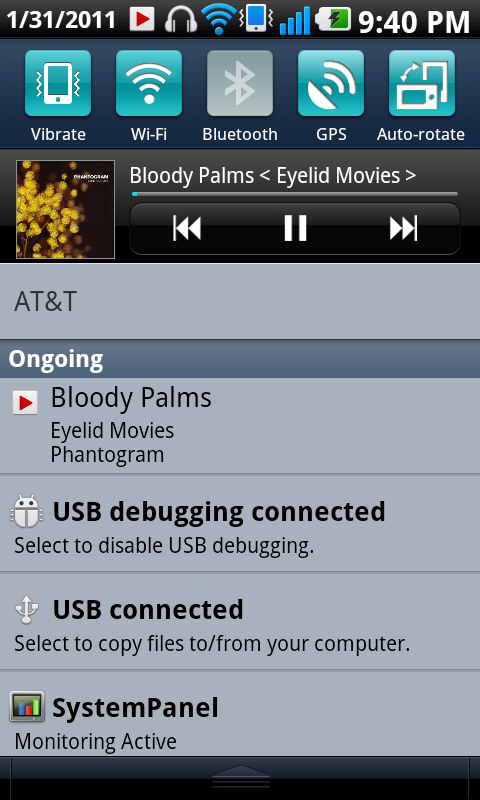
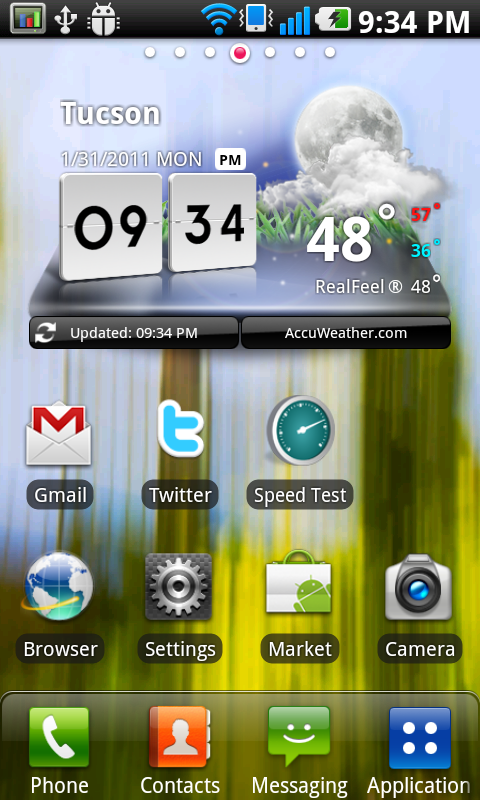
Most of the LG skin is actually pretty tasteful. Status icons for signal, battery, and network status are colorful and non-stock, and the color-on-black theme is vaguely reminiscent of Android 2.3. One of the things I’m a fan of is that LG made the network status indicator show H for “HSPA,” and 3G for UMTS—there’s a distinction between those two network modes that stock Android doesn’t draw unless you dig down into “About” or use a widget.
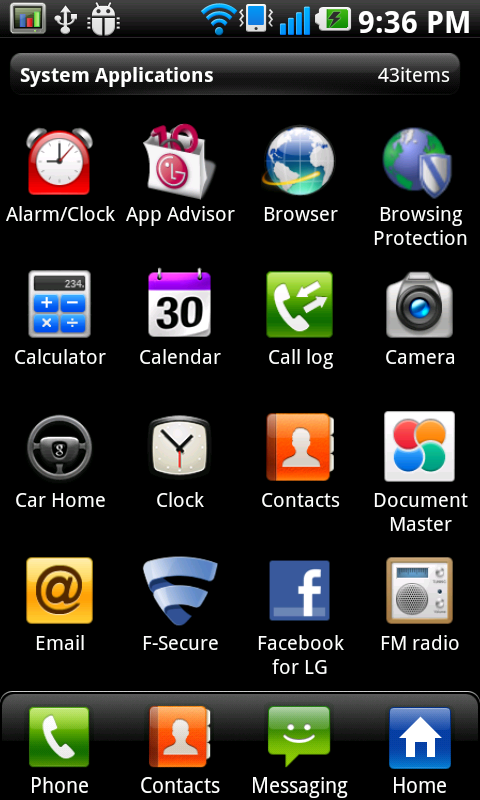
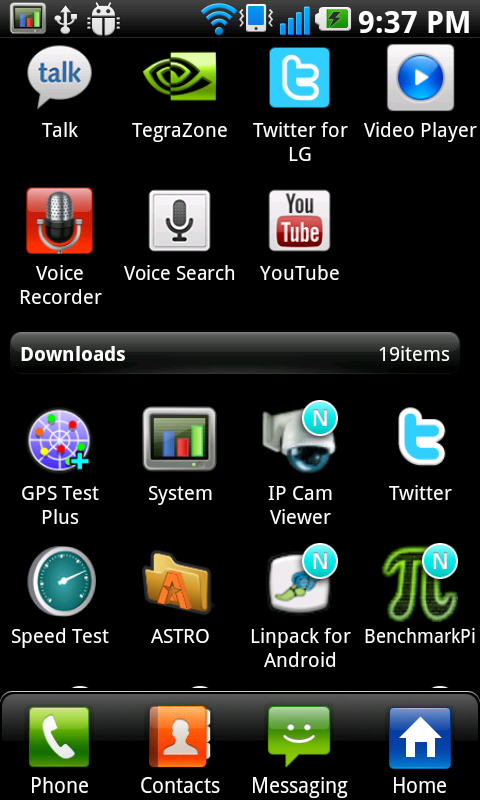
The theme emulates some of iOS in a rather annoying fashion, including a four-icon dock at the bottom that persists across all pages and isn’t readily user customizable. Phone, contacts, messaging, and applications are what always are going to be at the bottom. Even if you bring up the applications launcher, those elements persist, though “applications” changes to “home.”
The launcher organizes applications in a slightly odd way with two discrete categories. System applications include those that come preinstalled as part of LG’s preload. You can’t change or remove these, they’re special, and there are 43 of them. I’m actually a bit put-off by how much bloat there is here, including “browsing protection” and another separate “f-secure” mobile security application, all of which can’t be removed. I was hoping that “preloaded apps” would let me uninstall preloaded apps, instead it appears to inexplicably do absolutely nothing. There’s Facebook, Twitter, and MySpace all of which are “for LG,” presumably to accompany preinstalled widgets. Why you’d use these instead of the official versions of the respective apps is beyond me.
Down below “system applications” is a category simply named “Downloads.” It’s under this category and completely discrete section that things from the marketplace, internet, or otherwise installed will appear. Applications are ordered in here in the order they’re installed by default, which is puzzling. Notice that some applications also have a blue N above their logo—N ostensibly stands for New, as the bubble goes away after initial launch. You can force things to be organized alphabetically by performing a category reset in the menu. There’s also the option to view apps in a horizontal grid or list.
It’s a strange dichotomy that LG sets up with this launcher scheme that divides “downloaded” apps from “system applications,” one that’s made on no other Android device I’ve ever seen but the Optimus One. The end result is that most of the stuff I want (you know, since I just installed it) is at the very last page or very bottom of the list, resulting in guaranteed scrolling every single time. If you’re a power user, just replace the launcher with something else entirely.

The theme inside the messaging application is also honestly somewhat of an obvious attempt to emulate iOS. The dialog takes place in chat bubbles that are strikingly similar. What’s frustrating here is that the font is huge, and the shading and space between those bubbles is positively gigantic, which makes it hard to see the whole dialog.
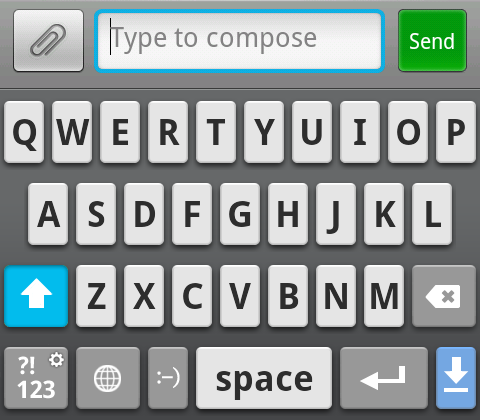
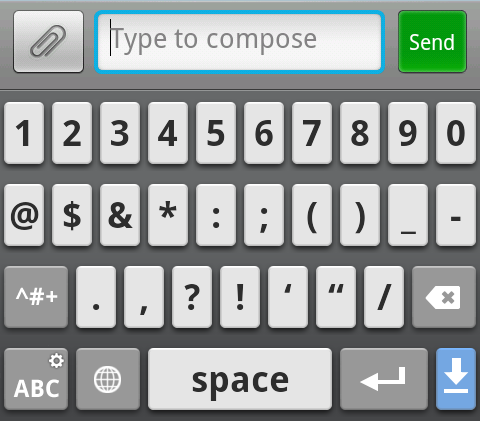
The 2X ships with just LG’s own custom keyboard as an available option. The keyboard isn’t multitouch and offers only basic correction, but is visually more appealing than the stock Android keyboard. It works but it’d be nice to see Swype on here, but you can grab that yourself if you’re lucky enough to be in the beta program. I immediately went and grabbed Swype just out of force of habit, but found that occasionally input from the keyboard in the messaging application didn’t actually make it into the compose box. I could tell the keyboard was receiving input, but characters simply wouldn’t appear until I switched input methods back and forth at least once. Other small glitches included messages I sent sometimes not resulting in the dialog auto-scrolling to the latest. SMS is one of those things every phone has to really get right to be usable, and I feel like there’s a bit more refinement needed here.

The dialer also has some LG theme going on, but the differences between it and stock are purely aesthetic. White buttons, a link to messaging instead of voicemail, and moved backspace key are really it.
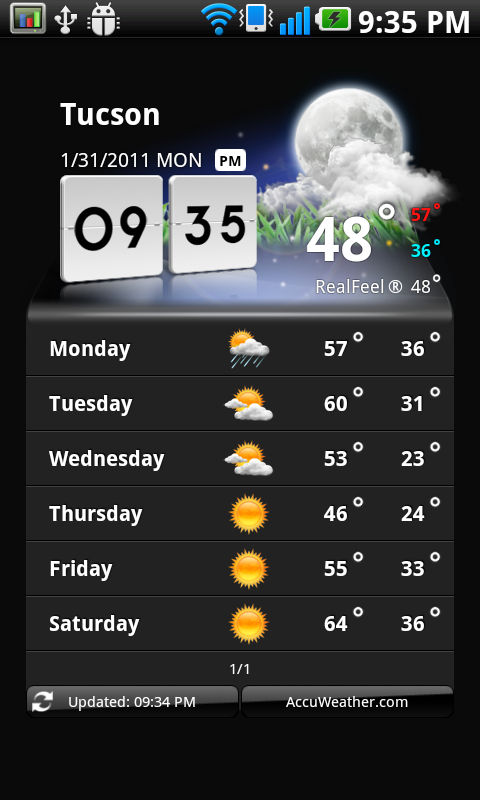
Back on the home screen, by default LG has a pretty decent preload of widgets and shortcuts. Their weather and clock widget is actually the best I’ve seen yet and has already been ripped from system dumps for use on other Android phones—after time with it, I can honestly understand why. Another extra is the ability to totally clear all the widgets and shortcuts from a particular homescreen from the longpress menu.
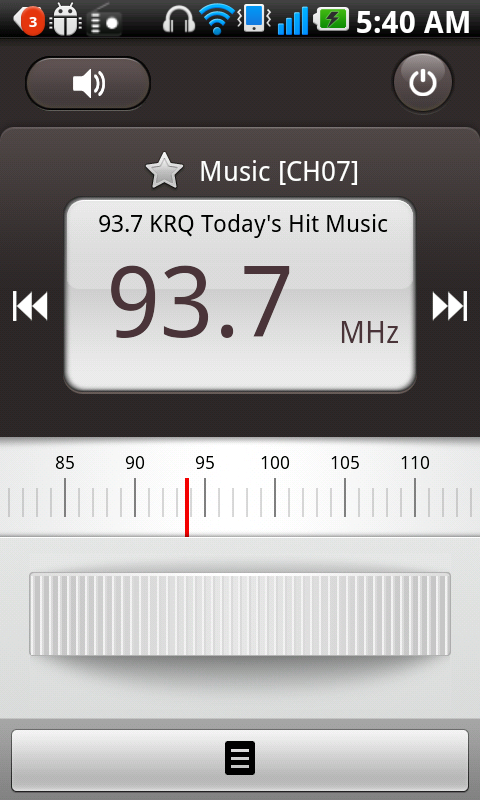
There’s also an FM radio application which works off the previously mentioned BCM4329 stack. Standard fare here with the requirement that you have some headsets plugged in to double as the antenna. The radio application has an auto-scan function for detecting local channels, and also pulls down RDS text.
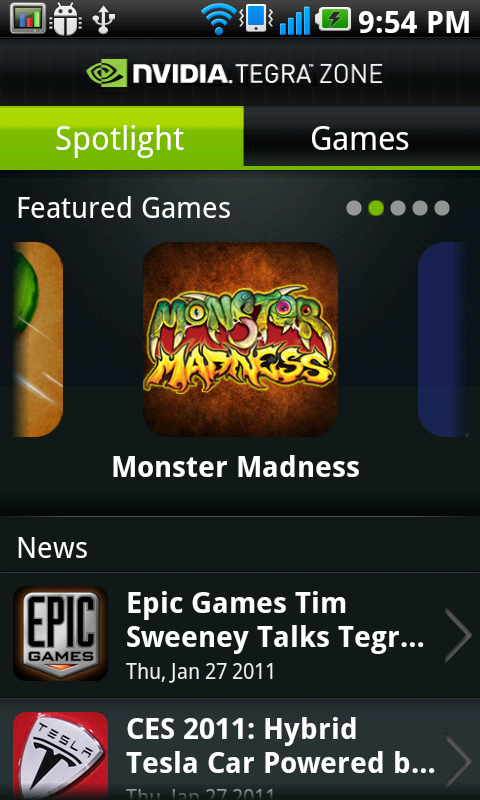
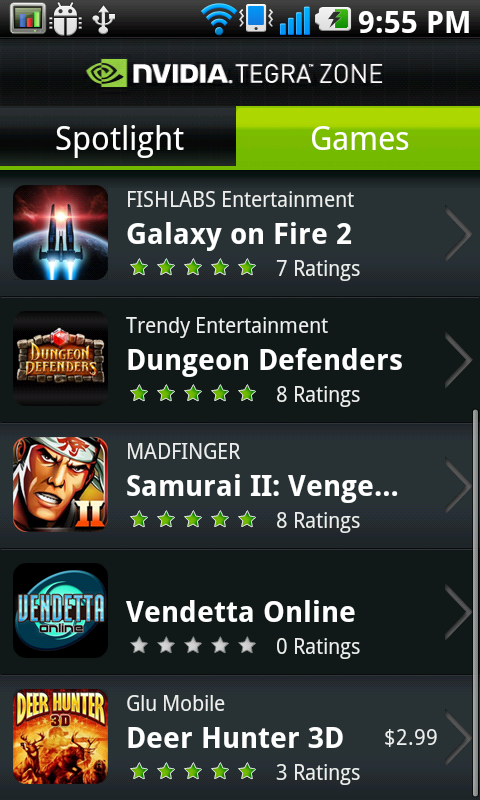
Alongside the normal marketplace also is NVIDIA’s Tegra Zone marketplace which is home to apps and games optimized for Tegra 2 based smartphones. In general, they’re differentiated from normal applications by having more detailed geometry, textures, shaders, and content. Tegra Zone isn’t fully launched yet (it goes live when the 2X starts shipping stateside, I’m not sure whether it’s live on the Korean version), so we couldn’t install applications from it directly, but could still explore the application and try sideloaded copies of some games from the market.
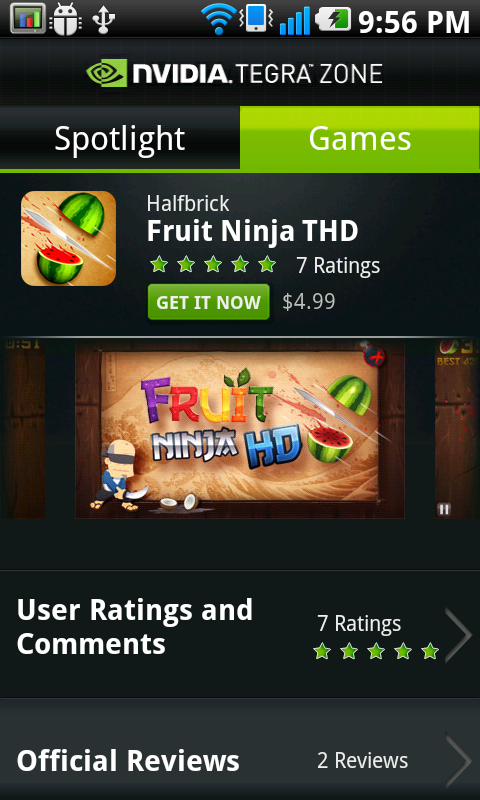
One of the interesting things done in the Tegra Zone marketplace is drawing a distinction between user contributed reviews and professional ones. As games get closer to their console and desktop counterparts (and probably more expensive), that could definitely be useful.
We were able to try Galaxy on Fire 2 and Dungeon Defenders, two of a number of titles that will be available through Tegra Zone. Galaxy on Fire is essentially space trader reimagined for 3D (I remember playing Space Trader an eternity ago on a Palm III) and uses OpenGL ES 2.0 shaders, specular and bump mapping, and 4x higher texture resolution and geometry over the normal version. It’s definitely visually compelling, especially for a mobile device. I’ve played Galaxy on Fire 2 on iOS a little bit and definitely can appreciate the difference in visuals between the two versions.
Dungeon Defenders is sort of a 3D tower defense game with online and RPG components. What makes the title interesting is that it’s Unreal 3 engine based and looks visually compelling.
Accelerometer Gestures
At CES I spoke to a number of people from Kionix, who make MEMS accelerometers for a wide variety of consumer electronics. What they were most exicted about, however, were accelerometers with hardware support for detecting a variety of gestures. Things like detecting where touch events are on the screen purely from accelerometer data (even multiple accelerometers), and gestures such as waving or tapping on all sides of a phone. All that support is baked into the hardware—just watching a register is all that's required on the software side.
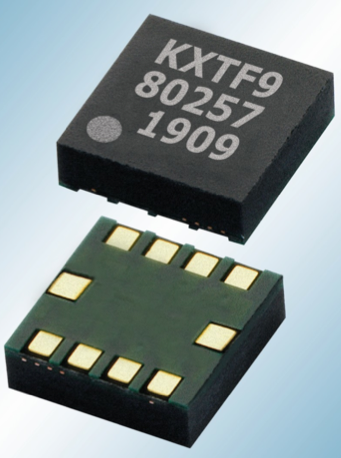
They told me to expect to see it in smartphones soon, but I didn't think soon meant this early. When I saw the gestures tab in the 2X, I suspected Kionix. After a bit more digging, I found that the 2X definitely has a Kionix KXTF9 accelerometer inside, and the software support for a number of the gestures I saw demoed, spcifically directional tap and double tap.
Under settings is a field appropriately labeled "gesture" where you can see all the available accelerometer gestures.
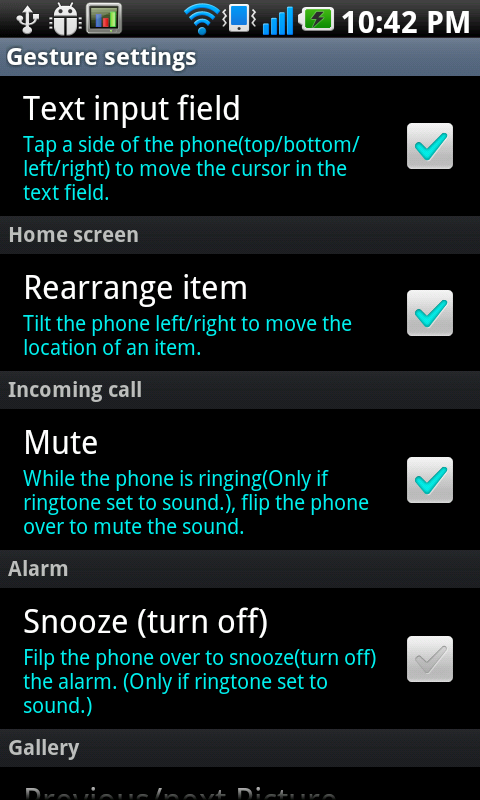
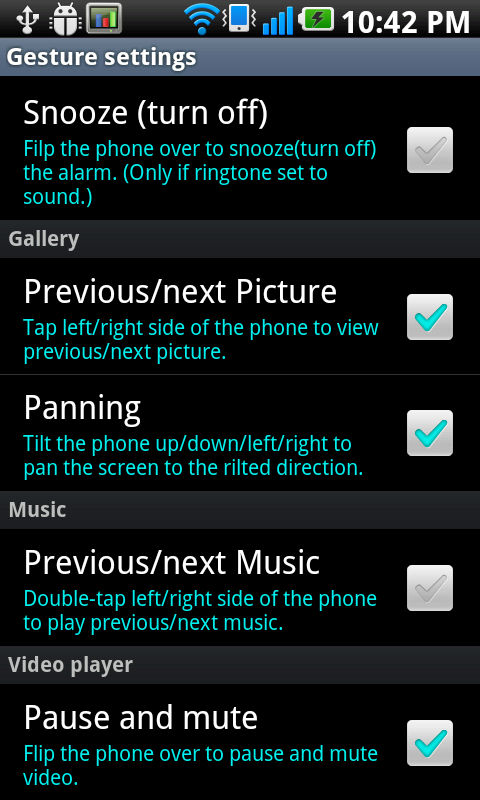
Back in the windows mobile days, I remember a number of homebrew applications enabling similar simple things, like putting the phone face down to silence a call or alarm, and rotating the phone clockwise in the air to lock, counterclockwise to unlock. This is sort of the extension of those, except with a few extras and much more polished and accurate detection.
Most of the elements are pretty self explanatory—you can tap on the sides of the phone to move the cursor, go to the next or previous photo, or double tap to change the track. It works surprisingly well. There's also those two gestures I mentioned earlier for silencing an alarm or pausing video and music playback. I show the tap left and right gestures in the overview video, which definitely works well. I think we're at the cusp of finally leveraging the accelerometer in some completely new and exciting ways.
Software Instability
One of the things I’ve been a huge proponent of is actually using every device in for review in place of my own. That was easy with the 2X since it worked with my AT&T SIM perfectly. The Optimus 2X is an excellent device save one huge problem—the software build on it as tested is extremely unstable. To be totally fair, the software LG has running on the 2X right now isn’t what’s shipping in Korea on their version, and isn’t totally final. The first time the instability issues I'm going to mention cropped up, I reset completely to defaults and asked LG and NVIDIA about what was going on.
When I played with the 2X at CES, I had some instability issues, including two random reboots while doing relatively mudane things. The software on our sampled 2X hasn’t randomly restarted, instead, applications crash in the background and go into a force close loop later. There are three main offenders I’ve seen do this on a regular basis, as frequent as once every three to four hours—the browser, messaging, and an LG background process named “omadmclient.” My own speculation is that omadmclient is crashing almost on schedule because it’s an OMA DM client checking for updates at a server that isn’t live yet. That’s forgivable but annoying.
The other two—browser and messaging—are not.
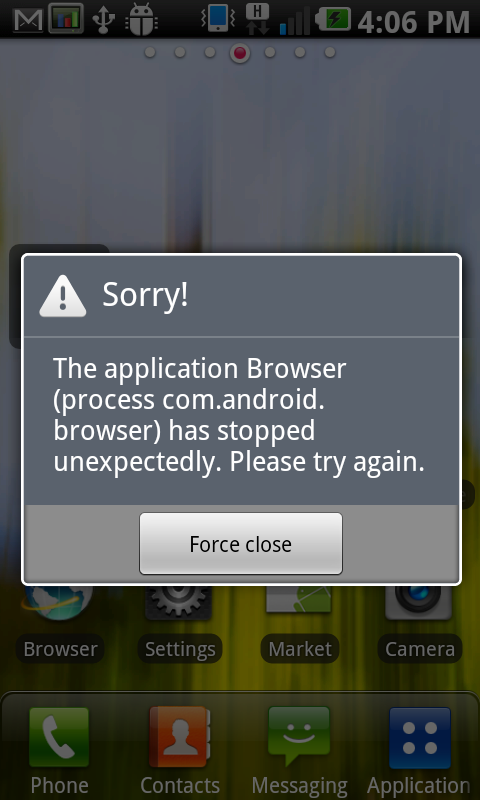
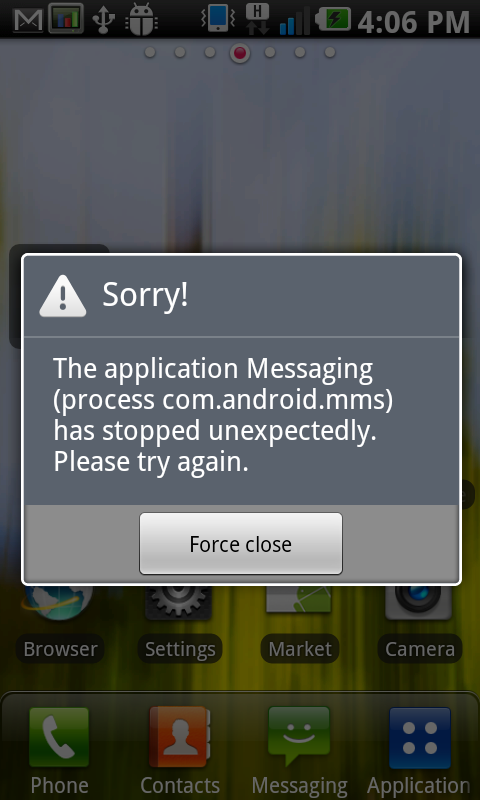
What happens is that periodically, when you try to launch either the browser or messaging, you’ll get a force close loop that doesn’t stop. Killing everything in the background with a task killer doesn’t fix the problem or make the force close loop stop either. A reboot is the only way to get things back up and working. It’s frustrating when that happens to the browser, but an even more serious problem when messaging does it.
When messaging decides to crash, you lose messages. The first time it happened, I assumed my friends were leaving me alone whilst I was working on a four hour long lab assignment. Instead, the entire messaging stack simply died in my pocket, silently. What’s curious is that when this happens, messages are received from the network side but never make it into the messaging database. They completely disappear—the result is that when you pull it out of your pocket to check and experience the force closing, you’ve already permanently lost messages. Another instance that sticks out in my mind was when I was working on this actual article—I assumed friends knew I was busy writing and were consciously making an attempt not to distract. Instead, I ended up losing a couple hours of messages—thankfully most people already are used to me bouncing between devices and periodically discovering things like this.
The other much less urgent thing is a recurring audio "pop" which occurs even muted very now and then when using the phone. It happens at random but just frequently enough to frustrate.
Again, the build of the software on the 2X we tested isn’t final and will definitely change before launch in the US. Nor is this the same software running on the 2X already for sale in South Korea. We pinged NVIDIA and LG about the aformentioned instability issues; NVIDIA confirmed that they saw the same stability issues, but LG told us they haven’t seen or are aware of any crashing or instability. Getting these fixed before launch should be priority one—I’d be using the 2X right now were it not for the constant liability of losing another couple of hours of messages randomly.



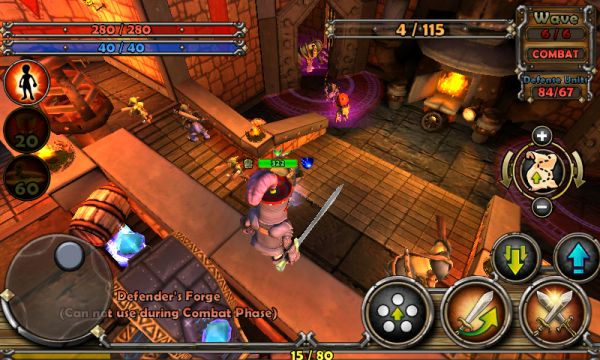
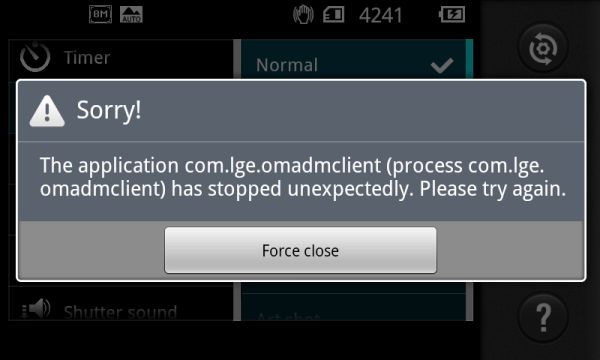








75 Comments
View All Comments
djgandy - Monday, February 7, 2011 - link
It'll be interesting to see how all the other SoC's perform with DDR2.DanNeely - Monday, February 7, 2011 - link
Where can I find more information on this?Anand Lal Shimpi - Monday, February 7, 2011 - link
Here's a link to the immediate mode vs. tbdr discussion in our old Kyro II review:http://www.anandtech.com/show/735/2
Take care,
Anand
silverblue - Monday, February 7, 2011 - link
I'm not sure I agree with the wording in this article about TBDR. The reason PowerVR didn't need to slap DDR RAM onto the Kyro II cards is because they simply didn't need it thanks to the reduction of traffic that comes from deferred rendering. The unknown element at the time was hardware T&L because it simply wasn't available and was thought to be impossible, however as this is yet again being performed on-die, wouldn't that also result in a marked reduction in traffic? Might need some clarification on this one.I've never seen it confirmed that the Adreno GPU performs TBDR; some clarification would be appreciated on this one as well! :)
Onto the option for changing fonts... my vendor-agnostic Galaxy S has such a feature called "Font style" under the Display settings, allowing you to choose the "Default font", "Choco cooky", "Cool jazz" and "Rosemary", with the option of getting more online.
Exophase - Monday, February 7, 2011 - link
Qualcomm bought out AMD's mobile GPUs and hence the Adreno 200 was a rebrand of AMD z430. Here's a little more background on the tiling nature of z430:(since apparently I can't post a link without being flagged as spam just google for this: gdc2008_ribble_maurice_TileBasedGpus.pdf - it's the first hit)
silverblue - Monday, February 7, 2011 - link
Interesting... I'd like to see the differences between their approach and that of Imagination Technologies.silverblue - Monday, February 7, 2011 - link
Thanks by the way... answered a lot of questions. :)AndroidFan - Monday, February 7, 2011 - link
should be 300mhz (=600/2)Zaitsev - Monday, February 7, 2011 - link
Is the camera really too thick to fit the width of the phone? I heard of many Evo users who have cracked the glass covering. While I haven't had this problem, it makes me wonder if it's really necessary in the first place.Thanks
MeSh1 - Monday, February 7, 2011 - link
I cant wait until you can wirelessly shoot your phones display to your tv ala intel WiDi. This HDMI out is cool, but the cable kind of kills it. With wireless display your phone becomes a game controller :) or a remote when shooting movies to your tv. Plus how cool would it be if your phone can fetch movies from your home network and you shot the playback to your TV. The Sony NGP should have implemented this. Ah well.